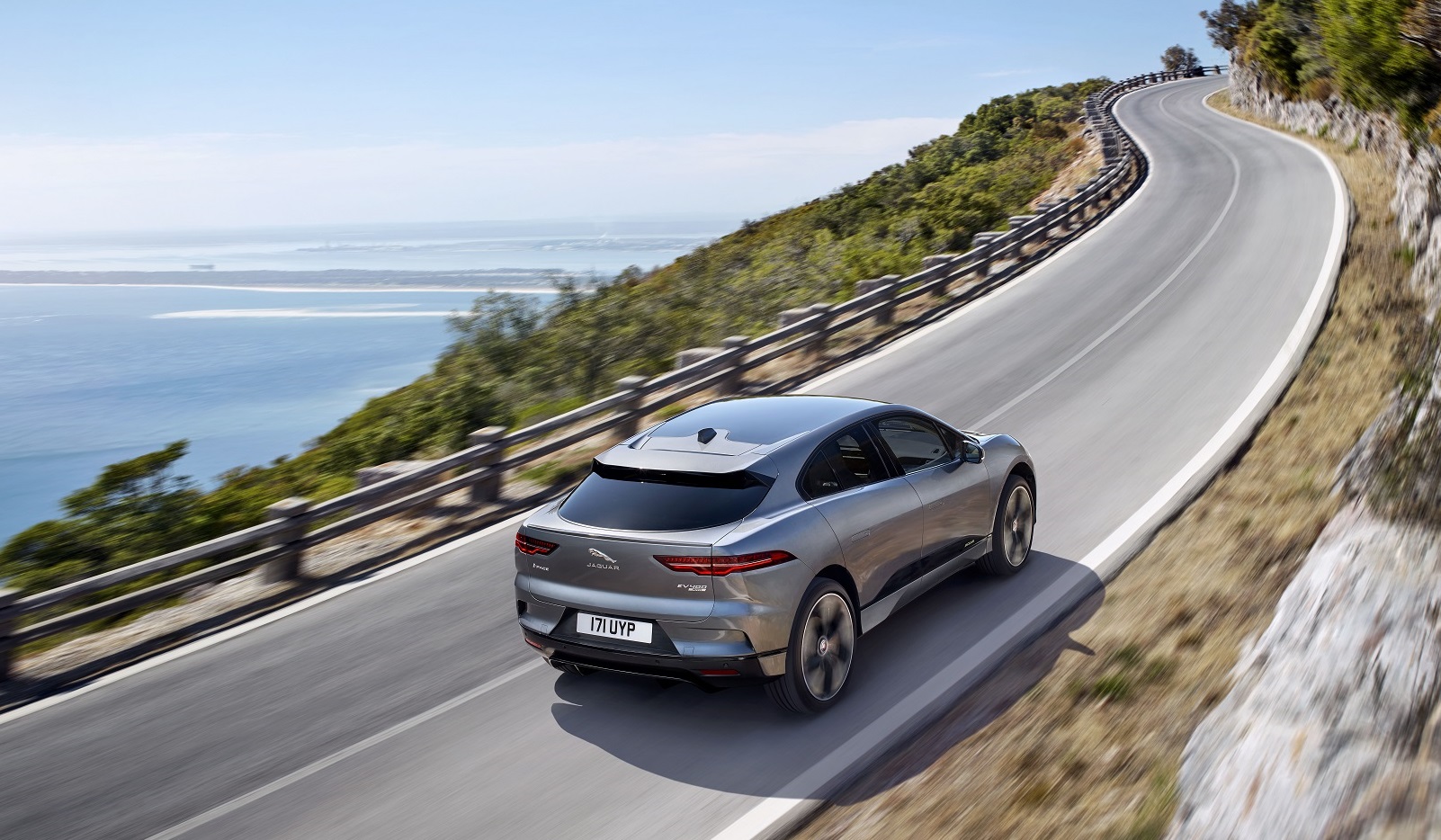The Jaguar I-Pace: The future of motoring?
SUV space, supercar pace, off-roading grace. Oh, and zero emissions.
By Will Stroude

Every new car is lauded by its maker as being a breakthrough — the next best thing since the last best thing was the next best thing. But the new Jaguar I-Pace, just on sale, is genuinely one of those once-in-a-generation cars, maybe even a once-in-a-lifetime car.
It’s the first all-electric product from a premium European brand, and its breadth of capabilities — on and off-road (our Portuguese test drive included wading along a river bed and climbing a mountain) — throws off many of the known Electric Vehicle (EV) shortcomings of old. It will, for example, travel almost 300 miles on a single charge, comparable to the range of a conventional petrol car on a full tank of fuel.
Charging, on a public 50kw charger, to 80 per cent of its capacity will take 85 minutes, but by the time first deliveries take place, any day now, upgraded 100kw chargers will be in place, reducing that to just 45 minutes — about as long as a coffee and comfort break.
The I-Pace has an electric motor on each axle, which means four-wheel drive, for optimum traction, acceleration and performance. And since we’ve mentioned performance, consider this: the car will hit 60mph from standstill in just 4.5 seconds, which is Ferrari fast.

The interior is a light and lovely place to be, especially with the optional sports seats lifted from the Jaguar F-Type and, when specified, with the full-length glass roof. And, since a lot of conventional hardware is no longer needed (no engine, no gearbox, no transmission tunnel), there’s more space than a Porsche Cayenne, a hefty, regular old-school 4×4, but within the footprint of a car a size down. Five can go anywhere in comfort, as Enid Blyton might have said.
The exterior, meanwhile, is one sharp suit of clothes: identifiably Jaguar, but cut from 21st-century cloth. Designer Ian Callum points to echoes of the “cab forward” CX-75 supercar concept, and talks of the I-Pace being one of the most exciting projects of his stellar career.
“From a design perspective, we were able to do almost anything we wanted, free of constraints, to house all the usual metal. With the battery packs within the floorplan, we start, essentially, with a skateboard, and can push the wheels to the corners for the benefit of both styling and accommodation. It’s as clean a sheet of paper as you could hope for.”

To drive, the I-Pace is both reassuringly normal and yet simultaneously quite different. The primary controls are light, throttle response is instant, progress is Rolls-Royce silent and – should you wish – absurdly swift. The battery weight beneath delivers a low centre of gravity in a fairly tall car, which is reassuring, so when pressing on, the car feels planted and is blessed with both grip and composure.
Prices start at £63,495 before a government contribution of £4,500 drops that to £58,995. That’s cheaper than an equivalent Tesla by a healthy margin, and is the product of a major premium car brand with a big dealer network.
And there’ll be no more trips to the fuel pumps and the Wild Bean Café, no more road tax, no congestion charges, and service intervals two years apart. The battery technology has an eight-year warranty.
Welcome to a greener future. It works.
Jaguar I-Pace // 90kWh battery // 394bhp // 513lb/ft torque // 0-62mph in 4.5 seconds // Top speed 124mph // 298-mile range // 0g/km CO2 // From £63,495 (£58,995 after government grant) // jaguar.co.uk
